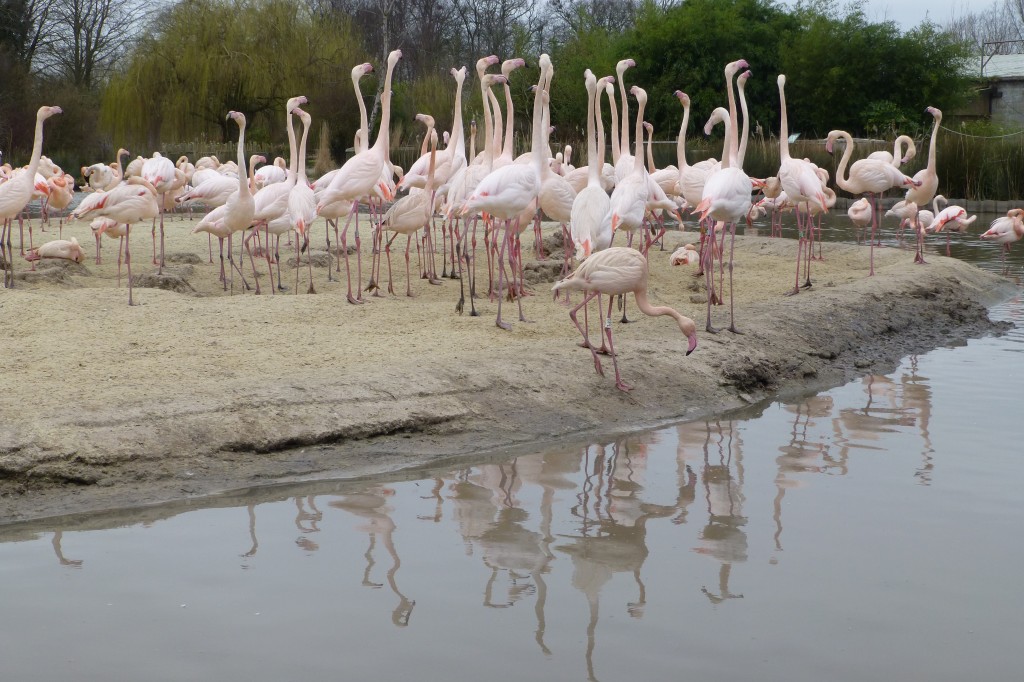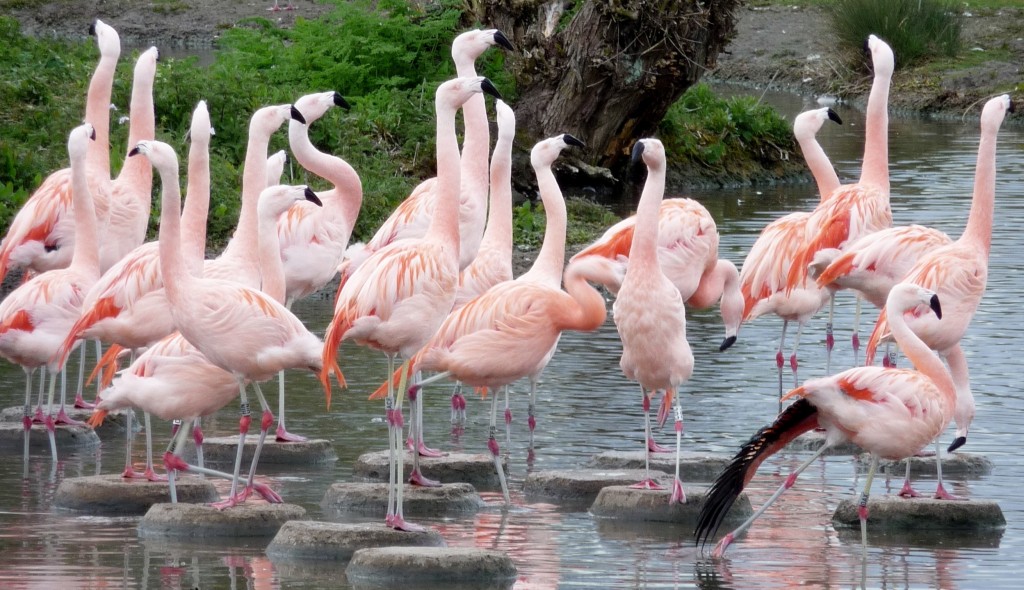Flamingo breeding activity, a few insights (1)
Great views of the head-flagging greater flamingos from the visitor's hide in "Flamingo Lagoon". Move slowly, talk quietly and you'll see much more cool flamingo behaviour.
There is a flurry of breeding activity in "Flamingo Lagoon" at present. Well, maybe more than a flurry. A whole whirlwind of dancing birds. The greater flamingos have been inside for a few days due to changes to their enclosure and the bad weather that has been causing annoyance up and down the country. And yet now we have sunshine and the birds outside again, able to prance and flounce and look flamboyant (apparently "flamboyance" is an accepted collective noun for flamingos?!) to the delight of all who visit them. Given this time of optimism and the thought of baby flamingos, I thought I would post a few short entries on the weird and wonderful world of flamingo courtship. Starting with the actual group display itself. I've talked about this before, but here is a brief reminder...
In the clip above, you see lots of birds head-flagging. This gets the flock "up to speed" with the idea of breeding and is most often started by the tallest, pinkest males. Flamingos are pretty democratic in their breeding activity and both males and females join in together. But I guess, like all things in life, it takes a certain someone to start things off. In the current flock in "Flamingo Lagoon", look out for the following birds, identified by their leg rings: "BBC", "ABB", "ABP", "GPD", "GPN", "DYD", "FYD", "GLH", "ACK", "GAI" and "MZ" who are really keen to dance.
You'll see the birds flash their wings open a lot during the group display. Wing saluting this is called, and it takes a few forms. The bird either stands very tall, or leans forward and looks like it is bowing. Sometimes the flamingo lowers one wing to the side and flashes it open. Interestingly, this wing flashing behaviour is especially significant in Chilean flamingos (apparently) as you can work out who they fancy based on the direction that the wing is flashed- the bird they like will have the wing flash directed towards them. Cute! Apparently in the other five species, it is not so subtle and they show everyone and anyone that will watch!
The more discerning flamingo? This Chilean flamingo on the extreme right, flashing a wing, is directing this signal to a bird that is standing somewhere near to it. A subtle message in a big flock that one individual rather likes the look of another...
Finally, you may see the birds charge up and down their enclosure. This is called marching. The flamingos might also run all together, but not tightly packed, flapping their wings. Again, this is also a form of courtship display but one that is less coordinated than regular marching. Lesser flamingos are the species that excel at marching and their legs all appear to move as one, as if on a conveyor belt.
Plenty to look out for at WWT Slimbridge at the moment! More updates to follow.





